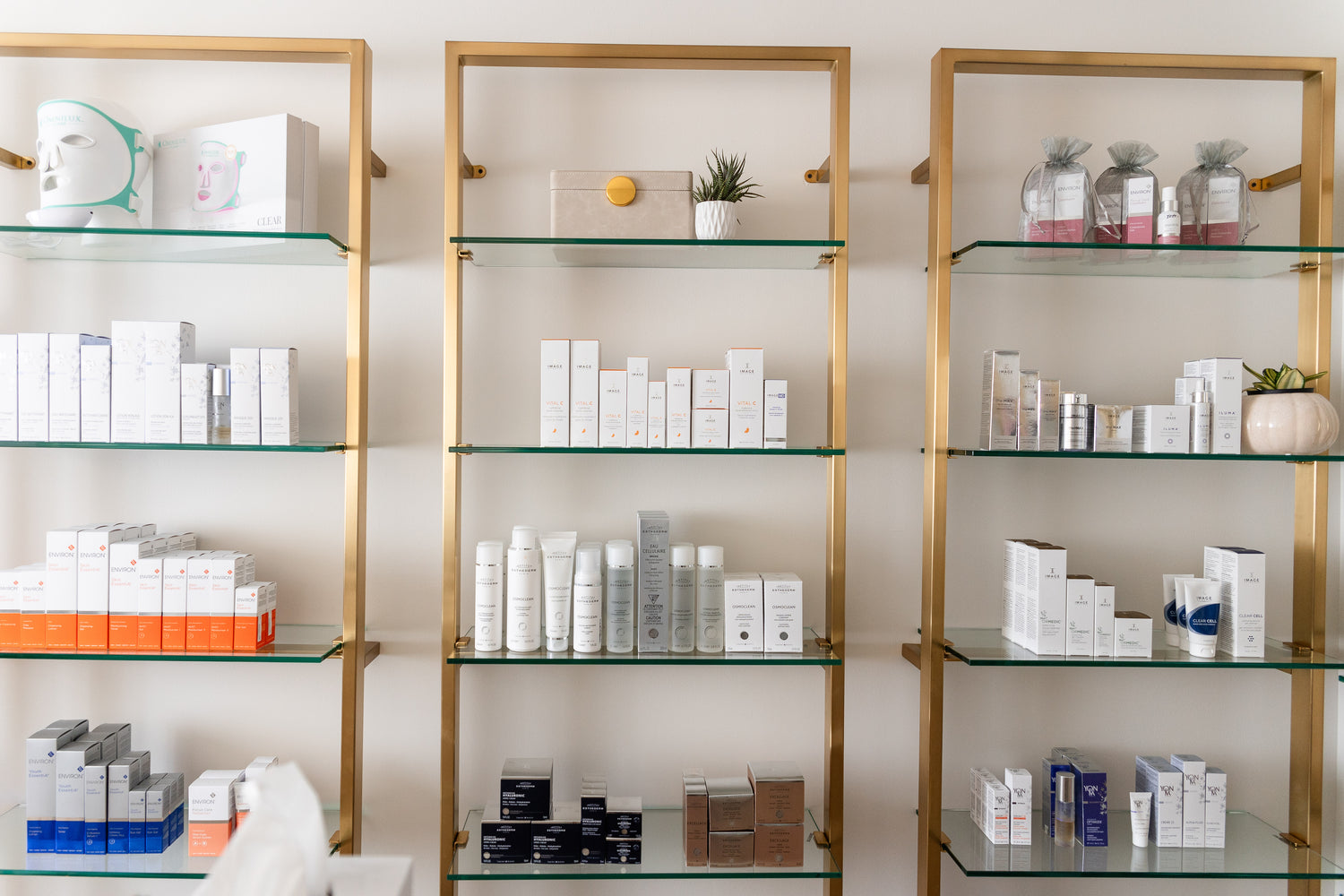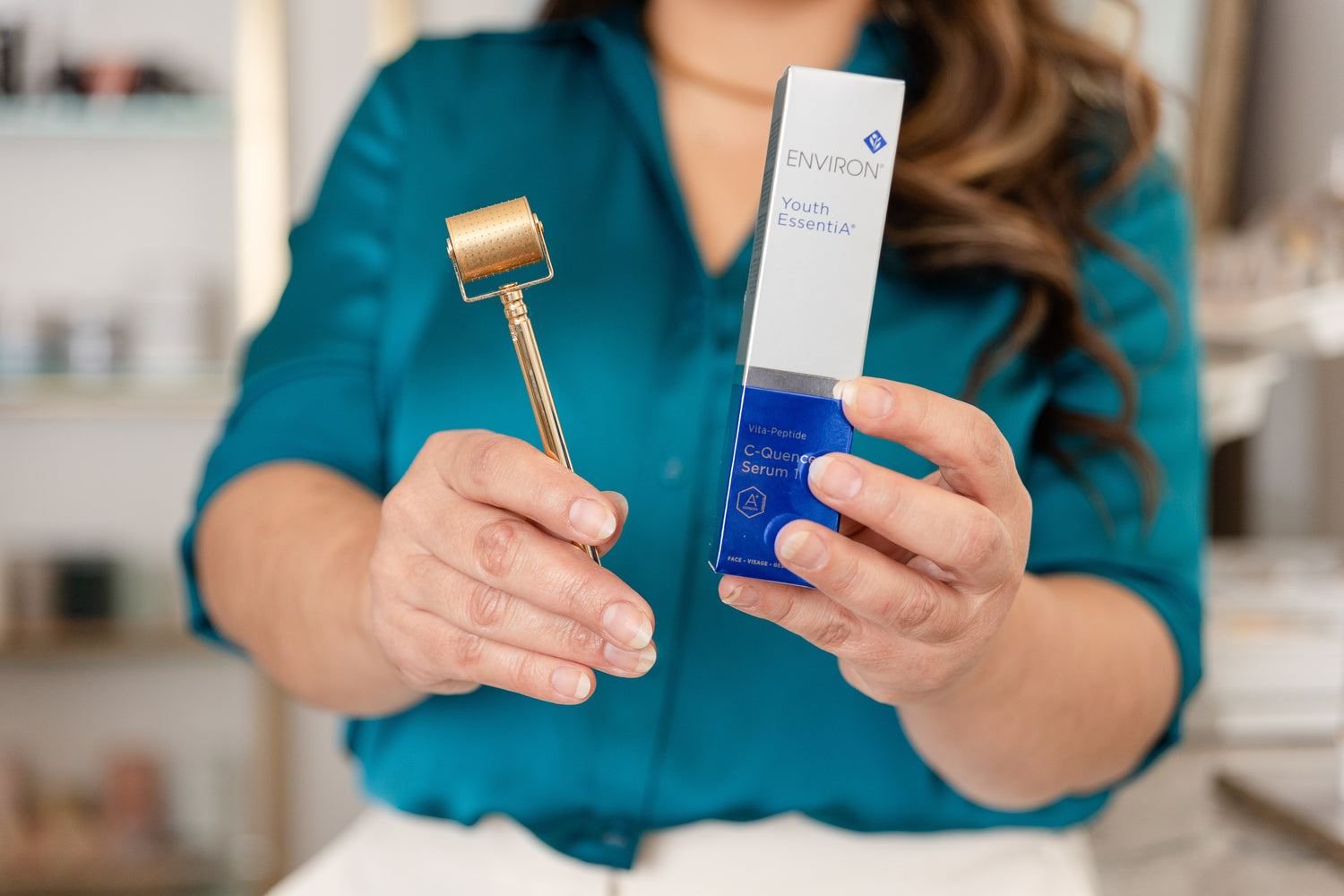Too often clients come in seeking a “skincare silver bullet”. THE product or facial treatment that will address all of their skincare concerns. At once. And at a reasonable price, no less! There is no such thing. Your skin is a living, breathing and ever-evolving organ and your skincare should adapt accordingly.
There are ways, however, to optimize your skincare and fast-track your way to a healthier complexion. Microneedling is one of those ways. Is microneedling right for you? Let’s talk about it…
What is Microneedling?
Microneedling is a skincare technique that involves puncturing the skin with micro-needles (hence the name) to either trigger the skin’s natural wound healing response or to create micro-pathways for improved product penetration. There are two types of microneedling treatments - professional treatments performed in a spa or doctor’s office or at-home cosmetic rolling.
What’s the Difference Between Professional Microneedling and At-Home Cosmetic Rolling?
In one word, the primary difference is depth. Professional treatments use longer needles (up to 2.0 mm) to create deeper punctures in the skin. At-home cosmetic rolling uses much shorter needles (0.1 to 0.2 mm) to create very fine, micro-pathways.
Professional microneedling treatments, also called Collagen Induction Therapy (CIT), can treat acne scars and the formation of lines and wrinkles. The deeper punctures stimulate the skin’s wound healing function - the release of anti-inflammatory cells to the “injured” areas to cause new collagen to be produced and thereby assisting in tissue repair and rejuvenation.
Cosmetic at-home rolling only affects the epidermis and greatly assists in product penetration and absorption. The skin, when functioning properly, works to occlude - it is concerned about keeping the bad stuff out. But that includes the wonderfully beneficial skincare products that we spend a small fortune on! At-home cosmetic rolling creates tiny pathways, allowing products to get to the right place and perform.
Did you know that less than 10% of your serums and actives are actually getting absorbed by your skin? Microneedling creates a delivery system that improves product absorption by more than 80%. Imagine the difference in your skin if more product gets to where it needs to go, in order to make a real impact. Guys, this is why at-home microneedling is KEY to ensuring that your at-home skincare regimen is truly effective!
Does Microneedling Hurt?
Professional microneedling usually begins with a generous application of a topical anesthetic which makes the session much more comfortable. At-home cosmetic rolling, if done properly, doesn’t hurt at all (and doesn’t require anesthetic).
Cosmetic Microneedling Pioneered and Perfected by Environ Skincare
Dr. Des Fernandes, Founder and Scientific Director of Environ Skincare, and world renowned plastic surgeon, pioneered this technology more than 20 years ago. He is THE leading authority on dermal rolling and the skin regenerative benefits of vitamin A. In his practice, he noticed that his client’s skin would reach a plateau and he needed to find a way for their skin to absorb optimal levels of vitamin A. Microneedling was born out of this necessity.
At-Home Cosmetic Rolling Do’s and Don’ts
I recommend rolling during your nighttime skincare routine. While we’re sleeping, our skin is regenerating. Using your cosmetic roller in the evening, will allow the skin to better receive more of the product that it needs, when it needs it most.
Start off by cleansing the skin and applying an appropriate toner. Work in sections (forehead, right side and left side). Using gentle pressure, hold the roller on the surface of the skin and move it horizontally, vertically and diagonally (creating a nice and even basket weave effect).
- Let the needles do the work; don’t apply too much pressure and be sure not to drag the roller.
- Don’t roll over active acne (so as to avoid spreading bacteria).
- Don’t share your roller (like you wouldn’t share your toothbrush).
- Avoid any areas that are inflamed or irritated (eczema, rosacea, psoriasis, etc).
When finished rolling, apply your serum of choice and follow with a moisturizer. Be sure to properly clean your roller and allow it to air dry. Hard core microneedling enthusiasts roll every night and even roll other parts of the body (neck, décolleté, hands, arms, etc - anywhere you want product to work better). If you’re new, start rolling 2-3 times a week and work up to daily.
Don't forget to properly clean your roller - Environ's Instrument Cleaning Solution makes it super easy.
Things to Consider When Purchasing Your At-Home Roller
- First and foremost, needle length. There’s a reason why professional microneedling is done by trained practitioners in a professional environment - longer needles are penetrating at deeper depths. When done improperly, you can cause damage. At-home roller needle length should not exceed 0.2 mm.
- Needle quality - durable surgical grade stainless steel. Imagine rolling needles that have rusted all over your face. Ew.
- Roller construction - precise needle placement for even and consistent punctures. A smooth action roller allows for smooth rolling and less dragging.
If you’ve reached a plateau in your skincare journey, at-home cosmetic rolling may be just what you need to jumpstart your results.






